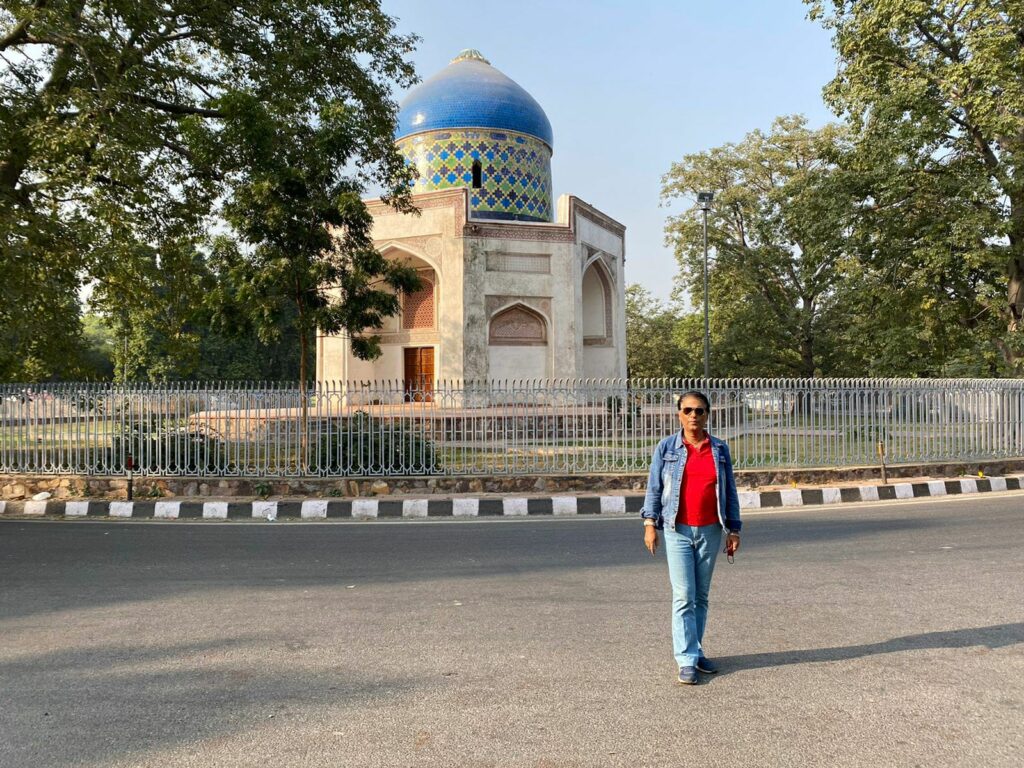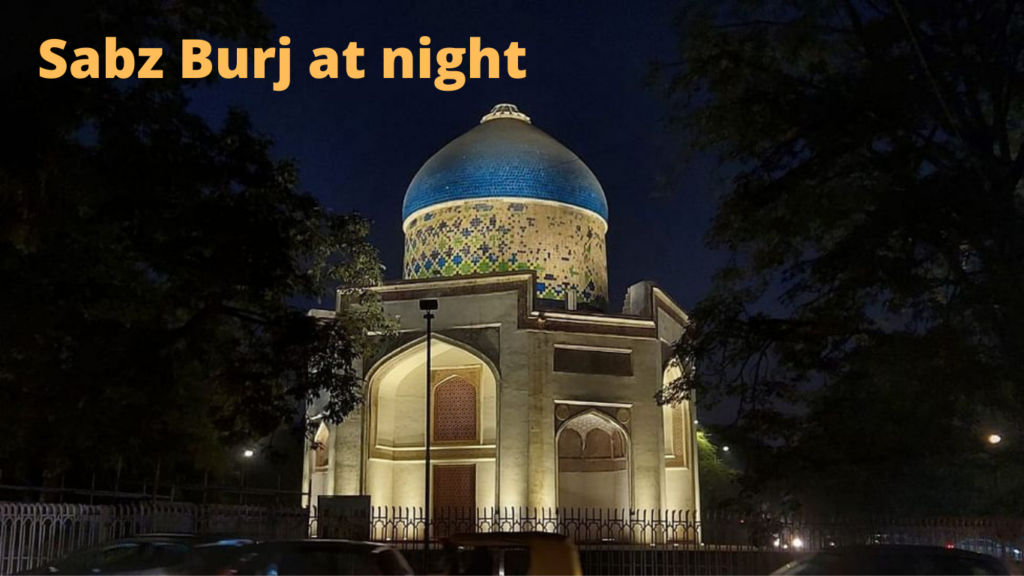Sabz Burj today, the turrets surrounded by a garden standing like a handsome bridegroom in it’s new glittering wedding suit at the island like roundabout of Mathura Road and Lodhi road near Humayun’s tomb in Delhi is showing its glare and glory with great pride to every passerby.

Sabz Burj
The octagonal tall structure with a bright vegetable-colored dome with four wide and four narrow sides stands majestically on the prominent location at the main Mathura Road a busy roundabout near Nizamuddin Basti. Which was named after a great Sufi saint. There are probably many tombs in this area around. The reason for this was the presence of the saint Sheikh Nizamuddin Aulia’s shrine. This Was Desirable for Muslims to be buried near a holy man, women because the day of justice their name is recommended. Sabz Burj is one among them.
The Sabz burj was believed to be the earliest tomb buildings in the era of Moghul dynasty in India. Sabz burj has high concaved arches on each side and a high raised dome with another dome inside which covered with tiles has given its present name green [sabz] dome. Some says that the name of the monument might have originated through local folklores. Pre Mughal features like guldasta[Bouquet] chajjajas and chattaries [canopy] striking glazed tiles on the lotus finial, dome and the elongated neck gives a unique tradition of central Asian look. The inner chamber contains the grave of an unknown person might be of the rank. Some Mughal historians opined that Sabj Burj tomb was constructed for Fahim Khan, who died in year 1626 a very close confidant to Abdur Rahim Khan e khana during the Mughal emperor Jahangir’s reign. But other historians have dated this tomb construction between the year 1530–40 of important nobleman or an unknown royal is buried. It is to be said that Sabj Burj was once occupied by a police post in 1905 during the British rule.

It took around three years by the Master craftsman, Tile makers, masons, stone carvers and associate artisans to have worked to carve and bring its original splendor. Inside the sabz burj there use to be beautiful intricate patterns and motifs made of real lapis stone and pure gold. Mr. Ratish Nanda, the project director of the Aga Khan Trust for Art and Culture, describes the hard efforts of the art conservators who spent three years in scientific cleaning to remove the plaster and chemical layers from the walls and ceilings to reveal the extent of the original surviving paintings.
Today the Sabz Burj tomb has been attractively illuminated for Delhiites and visitors at night, have a look and admire the beauty of the city. Thanks to Aga khan trust….







